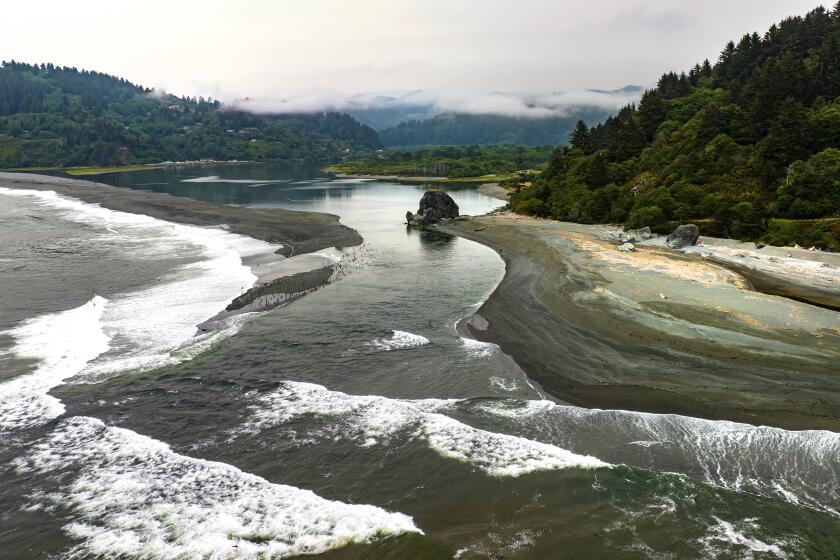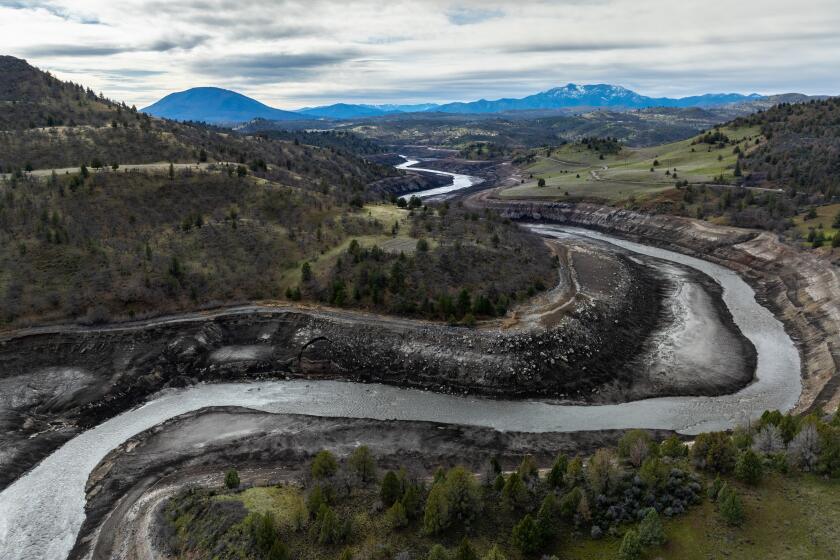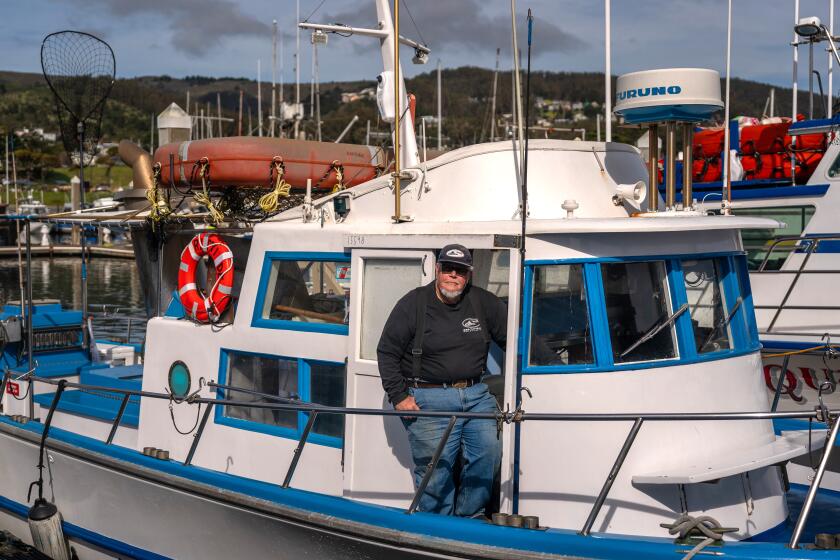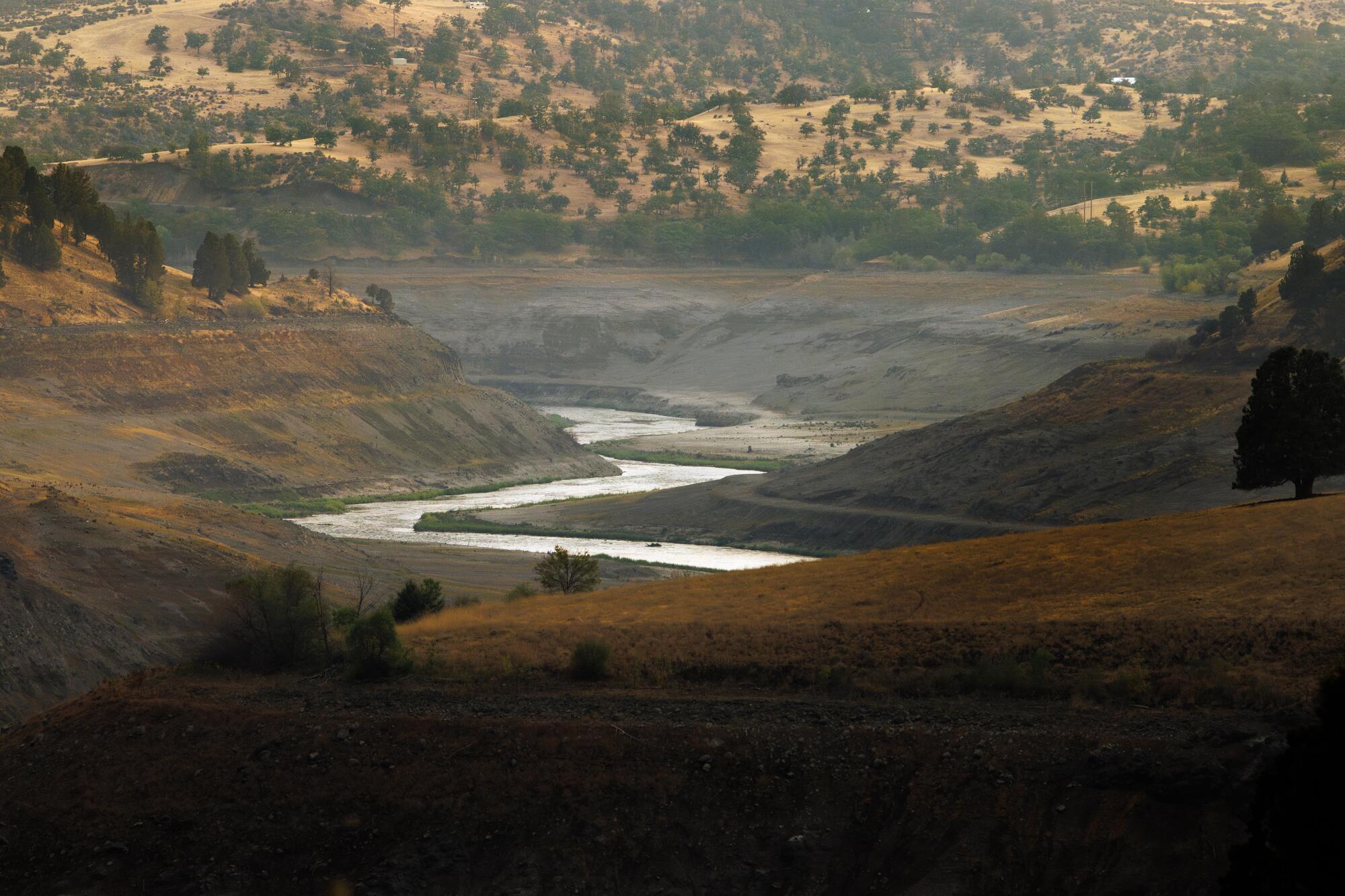
HORNBROOK, Calif. — Excavators clawed at the remnants of Iron Gate Dam, clattering loudly as they unloaded tons of earth and rock into dump trucks.
Nine miles upriver, machinery tore into the foundation of a second dam, Copco No. 1, carving away some of the last fragments of the sloping concrete barrier that once towered above the Klamath River.
Over the last few weeks, crews have nearly finished removing the last of the four dams that once held back the Klamath River near the California-Oregon border.
On Wednesday, workers carved channels to breach the remaining cofferdams at the last two sites, allowing water to flow freely along more than 40 miles of the Klamath for the first time in more than a century.
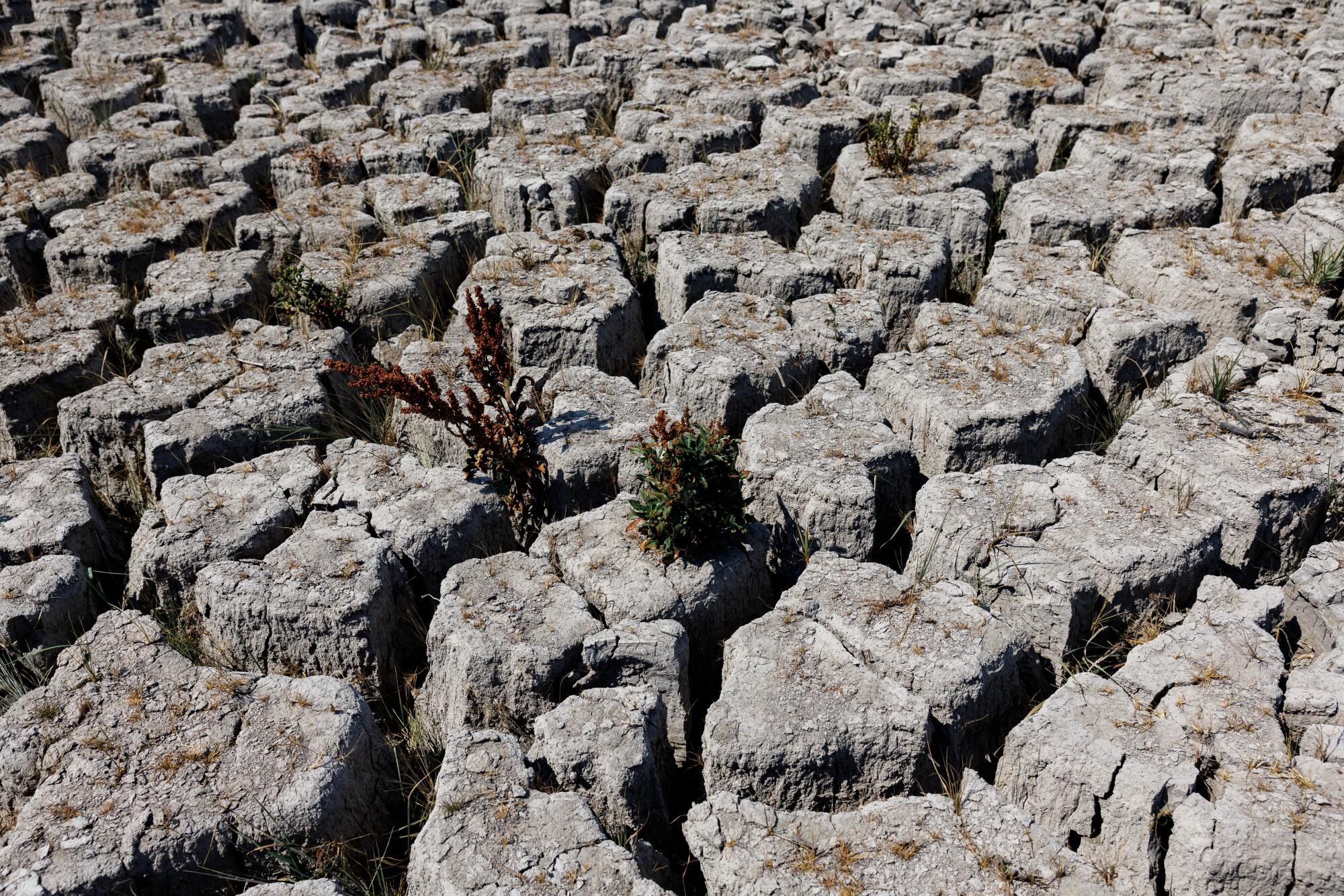
Indigenous leaders and activists cheered, smiled and embraced as they watched the river slowly begin to pour through what was left of Iron Gate Dam. Some were in tears.
For activists who have been waiting for this moment for years, the feelings of joy and excitement have been building in recent weeks as the undamming work neared completion.
“The biggest thing for me, the significance of the dam removal project, is just hope — understanding that change can be made,” Brook M. Thompson, a Yurok Tribe member, said recently as she stood on a rocky bluff overlooking the remnants of Iron Gate Dam.
“This is definitely one of the highlights of my entire life, seeing this view that we’re looking at right now,” Thompson said. “This is everything.”
The dismantling of four hydroelectric dams, which began in June 2023 and has involved hundreds of workers, is the largest dam removal effort in U.S. history.
Aggressive and impactful reporting on climate change, the environment, health and science.
The project’s goals include reviving the river’s ecosystem and enabling chinook and coho salmon to swim upstream and spawn along 400 miles of the Klamath and its tributaries.
Salmon are central to the culture and fishing tradition of Native tribes along the Klamath River. But the dams have long blocked the fish from reaching ancestral spawning areas, and have degraded water quality, contributing to toxic algae blooms and disease outbreaks that have killed fish.
Thompson, a 28-year-old restoration engineer for the Yurok Tribe, is one of many Indigenous activists who began protesting to demand change after witnessing a mass fish kill in 2002, when tens of thousands of salmon died, filling the river with carcasses.
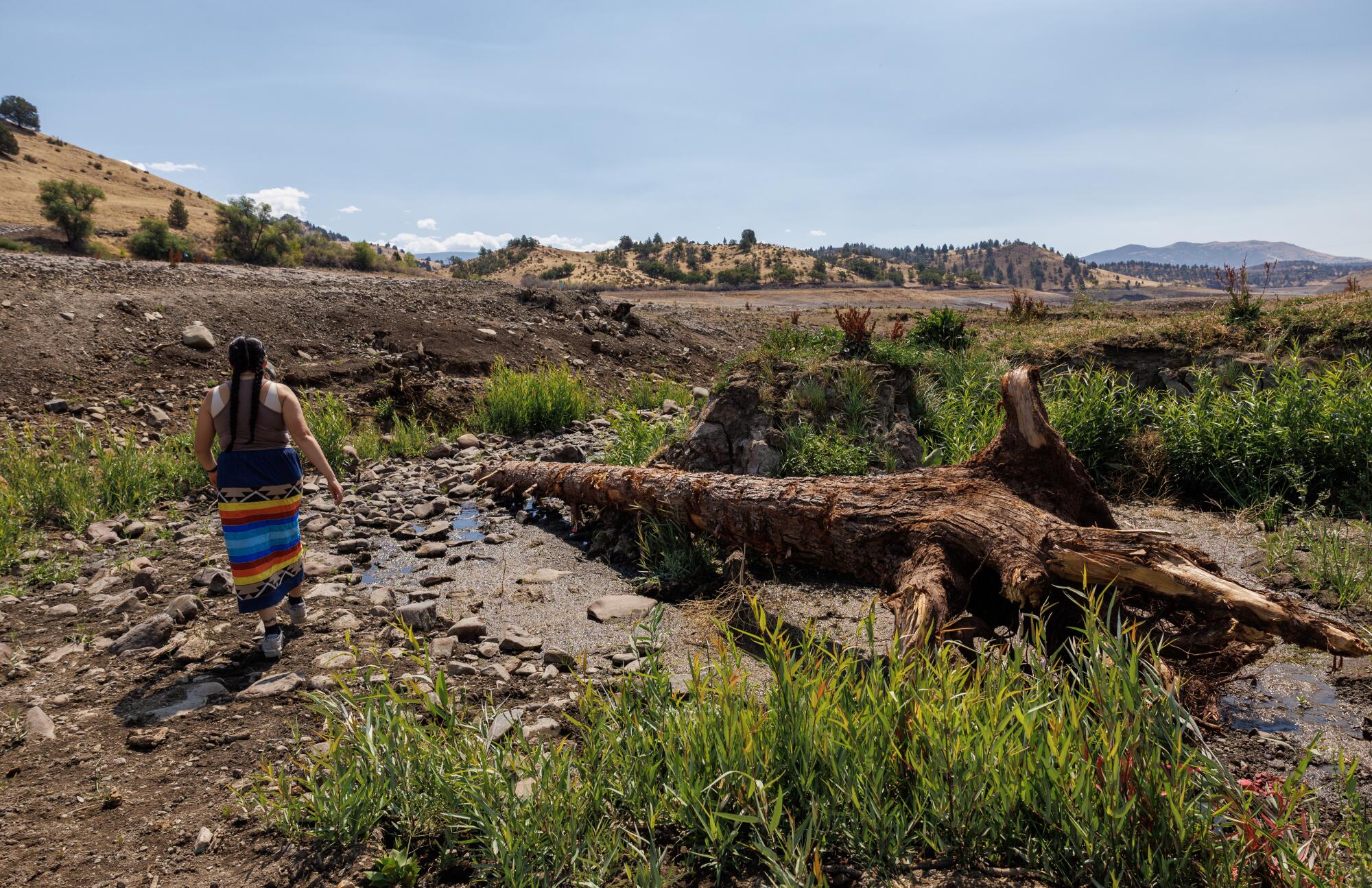
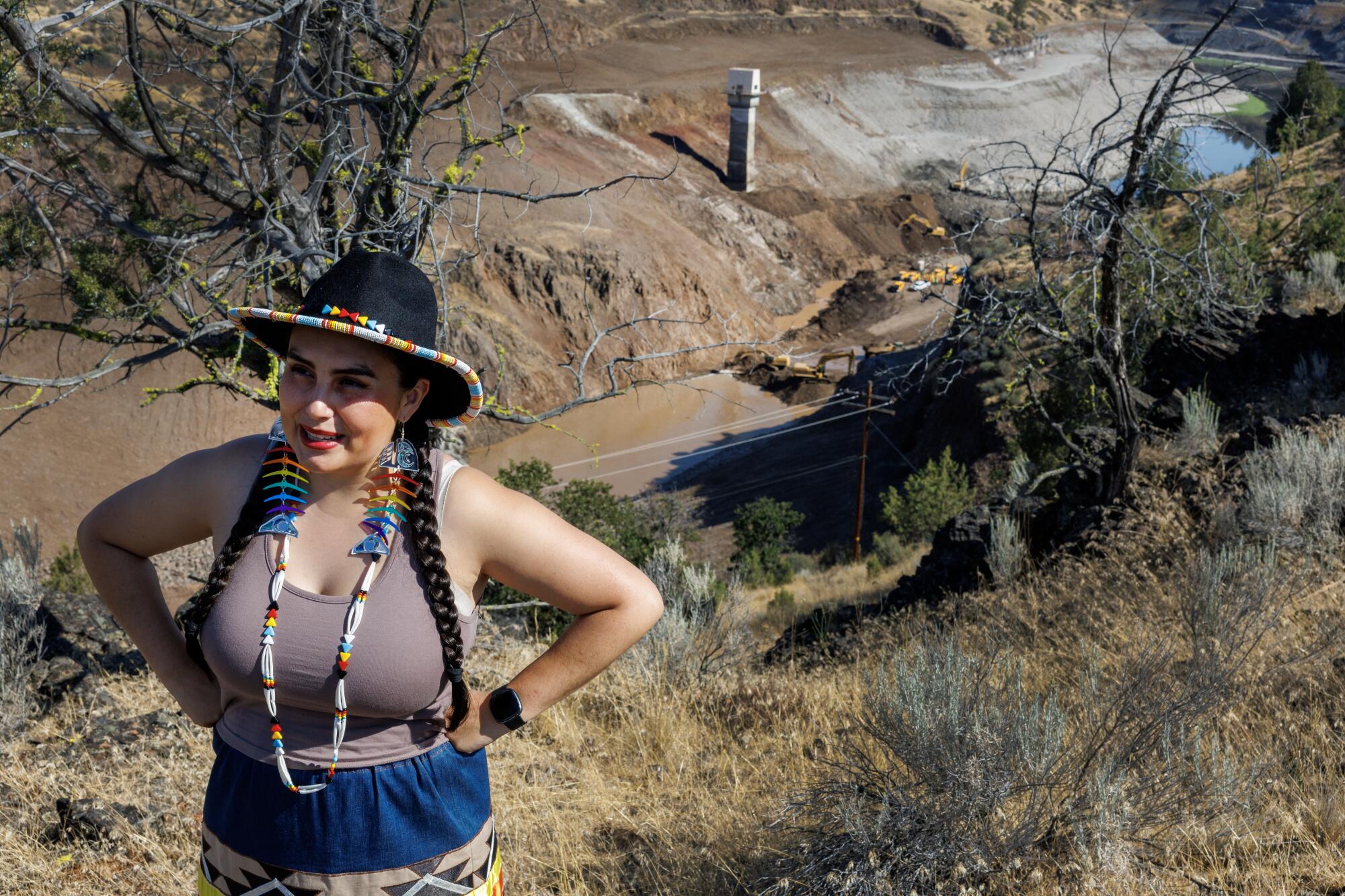
Thompson was 7 when she saw the dead fish floating in the river, and that memory has stayed with her. She saw it as evidence that dam removal was essential for restoring the river’s health.
In high school, she traveled by bus to demonstrations in Sacramento, Portland, Ore., and other places. She grew accustomed to hearing some say their calls for dam removal would never become a reality.
Now, those hard-fought dreams are finally coming to fruition.
Native activists fought for years to build support for taking down dams on the Klamath River in Northern California. Now, they hope removing the dams will help save their salmon.
“It happened so quickly,” Thompson said as she watched machinery carving into the base of the dam in mid-August. “It’s like a magic trick, like it was there and now it’s not.”
She hopes the dam removals will mark a historic turning point and eventually restore a thriving salmon population and reinvigorate fishing traditions.
“This is something where I can show my grandkids and be like, ‘There was a dam here. There’s not anymore,’” she said. “And part of that is because of the tribal people and our persistence in bringing this down.”
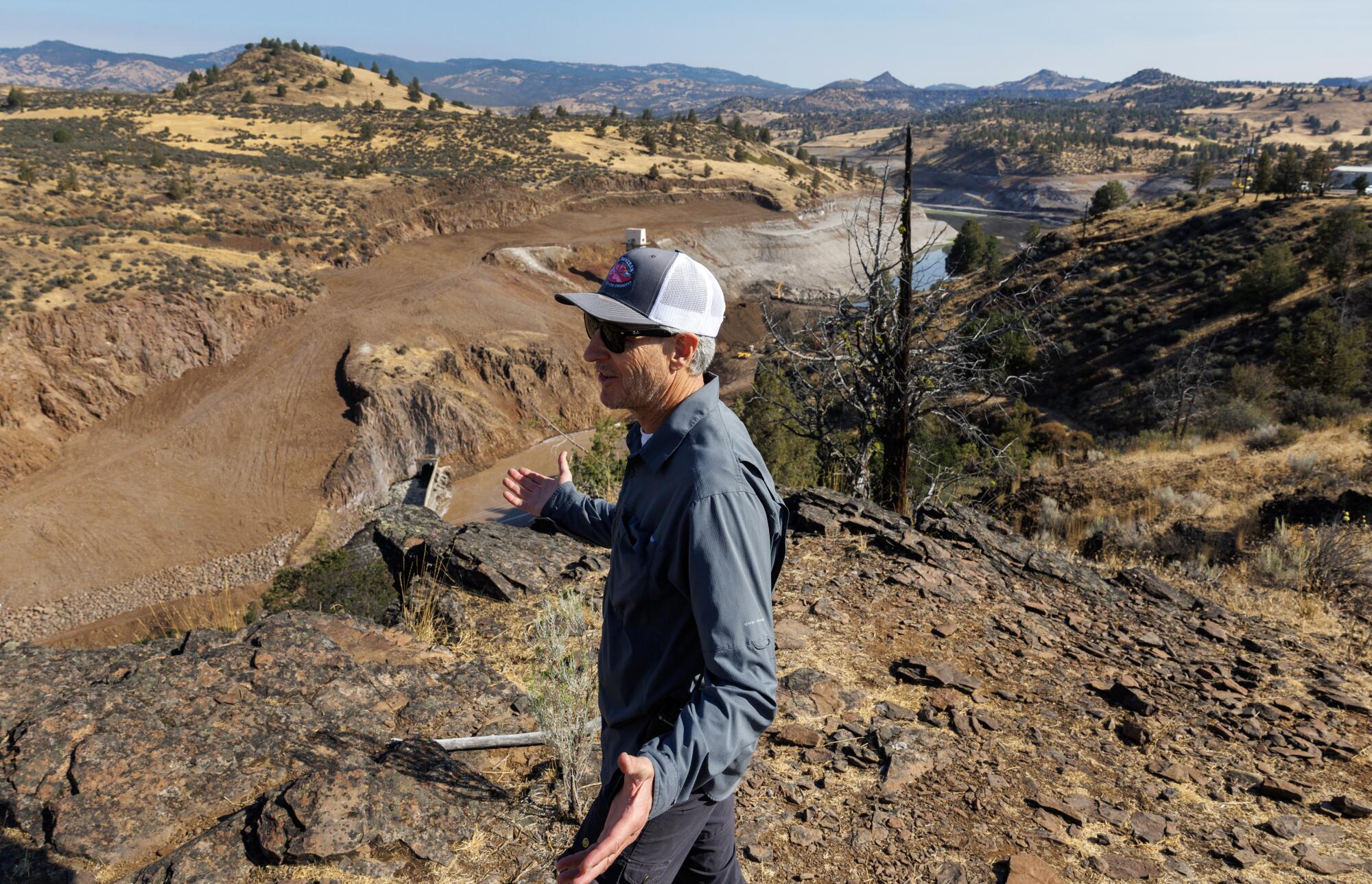
Accompanying her on the visit was Mark Bransom, chief executive of the nonprofit Klamath River Renewal Corp., which is overseeing the project.
“We’ve achieved what we set out to do here, standing on the shoulders of our tribal partners, and getting the job done ahead of schedule, which ultimately is good for the environment, good for the fish,” Bransom said. “It’s amazing to see the progress.”
Crews hired by the contractor Kiewit Corp. have excavated an estimated 1 million cubic yards of rock, soil and clay at Iron Gate Dam. They have hauled the material to a location nearby, using it to reform a hill that was removed during the dam’s construction decades ago.
Now that the river has returned to its natural channel, work crews will pour concrete to plug diversion tunnels where water has been rerouted and will demolish a concrete tower that was used to control the flow. Those tunnel sites will be covered with large rocks, Bransom said, and the work of taking out the dams will be complete in September.
“There really won’t be any visual reminders that there was a dam here,” Bransom said.
Reservoirs have been drained as the nation’s largest dam removal effort advances on the Klamath River, and an effort to restore the watershed is taking root.
The project’s $500-million budget includes funds from California and from surcharges paid by PacifiCorp customers. The utility agreed to remove the aging dams — which were used for power generation, not water storage — after determining it would be less expensive than bringing them up to current environmental standards. Two other dams, which aren’t affected by the project, will remain farther upstream in Oregon.
The removal of the four dams, which were built without tribes’ consent between 1912 and the 1960s, has cleared the way for California to return more than 2,800 acres of ancestral land to the Shasta Indian Nation.
Since the reservoirs were drained in January, the river and its tributaries have returned to their original channels, exposing lands that were submerged for generations. This winter and spring, workers scattered millions of seeds of native plants to begin to restore natural vegetation in the reservoir bottomlands.
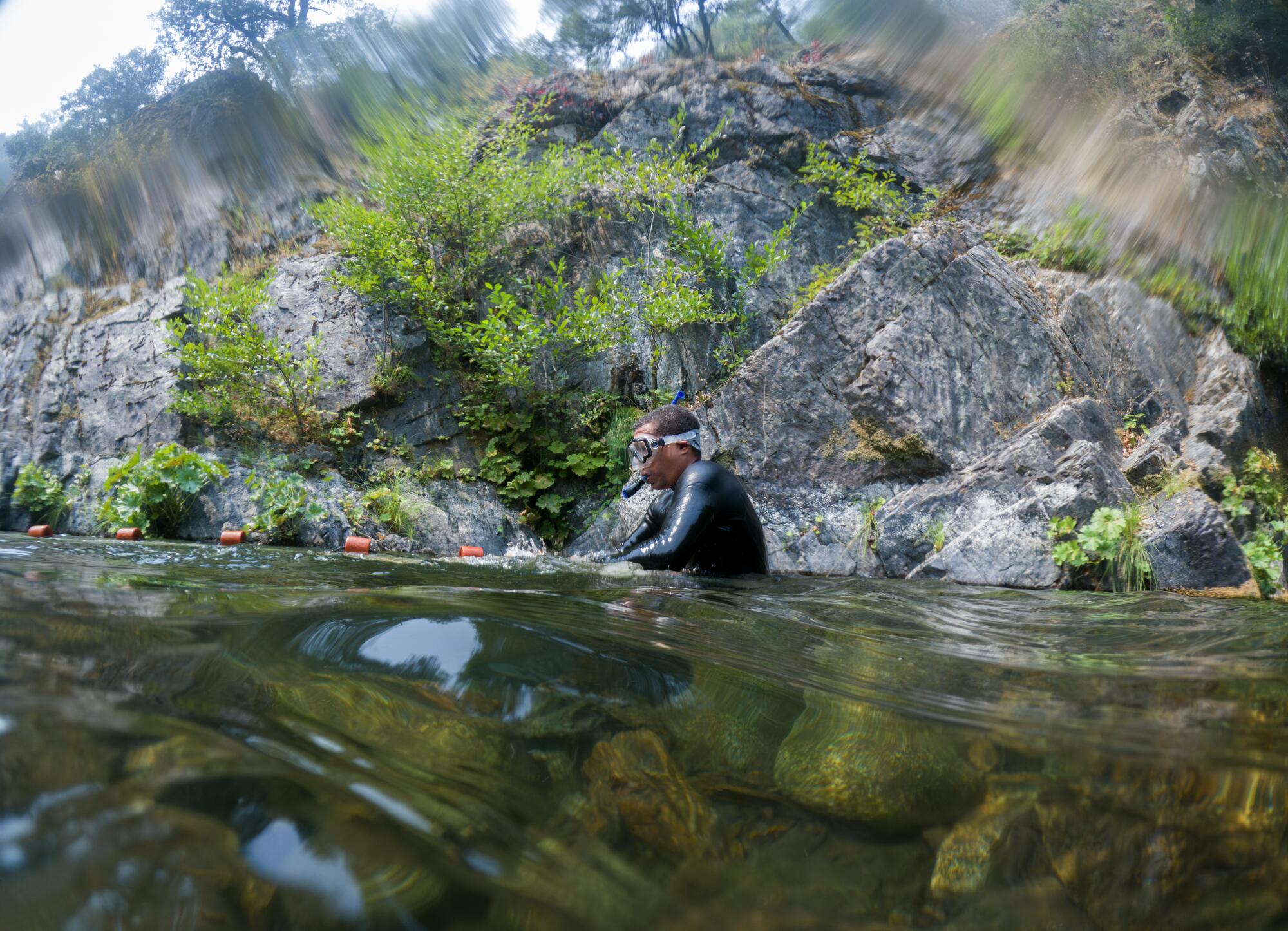
The approach draws on lessons from previous efforts, including dam removals on the Elwha River in Washington. Bransom said he and others believe the Klamath project will serve as a model for future restoration efforts aimed at helping salmon.
“What we’re doing with dam removal is essentially creating more favorable conditions for these amazing species of fish to return,” Bransom said. “Because these fish know. They have ancestral DNA that will lead them back to this place to do what they have done for thousands and thousands of years, to come back from the ocean and to spawn here and die and contribute themselves to the health of the watershed. And for the next generation of those fish to return to the ocean.”
With the river flowing freely, salmon will be able to pass upstream to access creeks that provide spawning habitat. Fall-run chinook have already been entering the mouth of the river and are heading upstream.
The emptying of the reservoirs has released vast amounts of sediment that had accumulated behind the dams, sending pulses of turbid brown water into the river. But the current sediment levels aren’t expected to be a major problem for the returning salmon.
Watching the dark water flow past, Thompson said: “The river is healing. The river is clearing itself out.”
The work of planting seeds in the empty reservoirs will continue this fall.
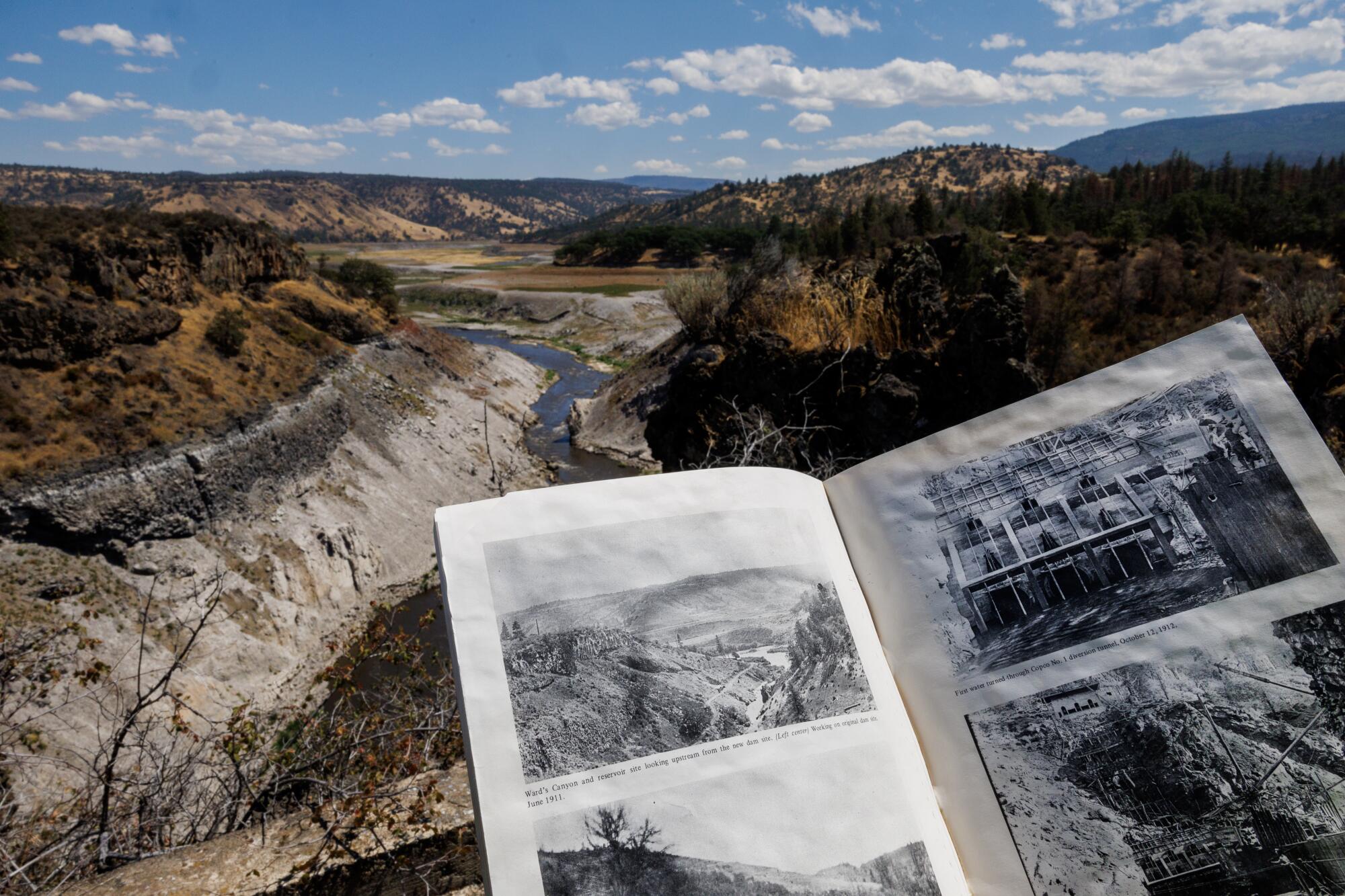
Thompson, who is currently a doctoral student in environmental studies at UC Santa Cruz, said she is looking forward to watching the vegetation return in the coming years.
Restoration crews have also been using a helicopter to carry logs and place them in the creeks, where they will create stream habitats for aquatic insects and fish.
Thompson watched as one helicopter soared over Camp Creek, a log dangling from a cable. A gripping device set the log down on the creek bed while the whirling rotor blades kicked up dust.
“It’s not a usual thing where you see fish get their habitat taken away for decades and then it’s given back all of a sudden,” she said. “So seeing how they behave will be interesting.”
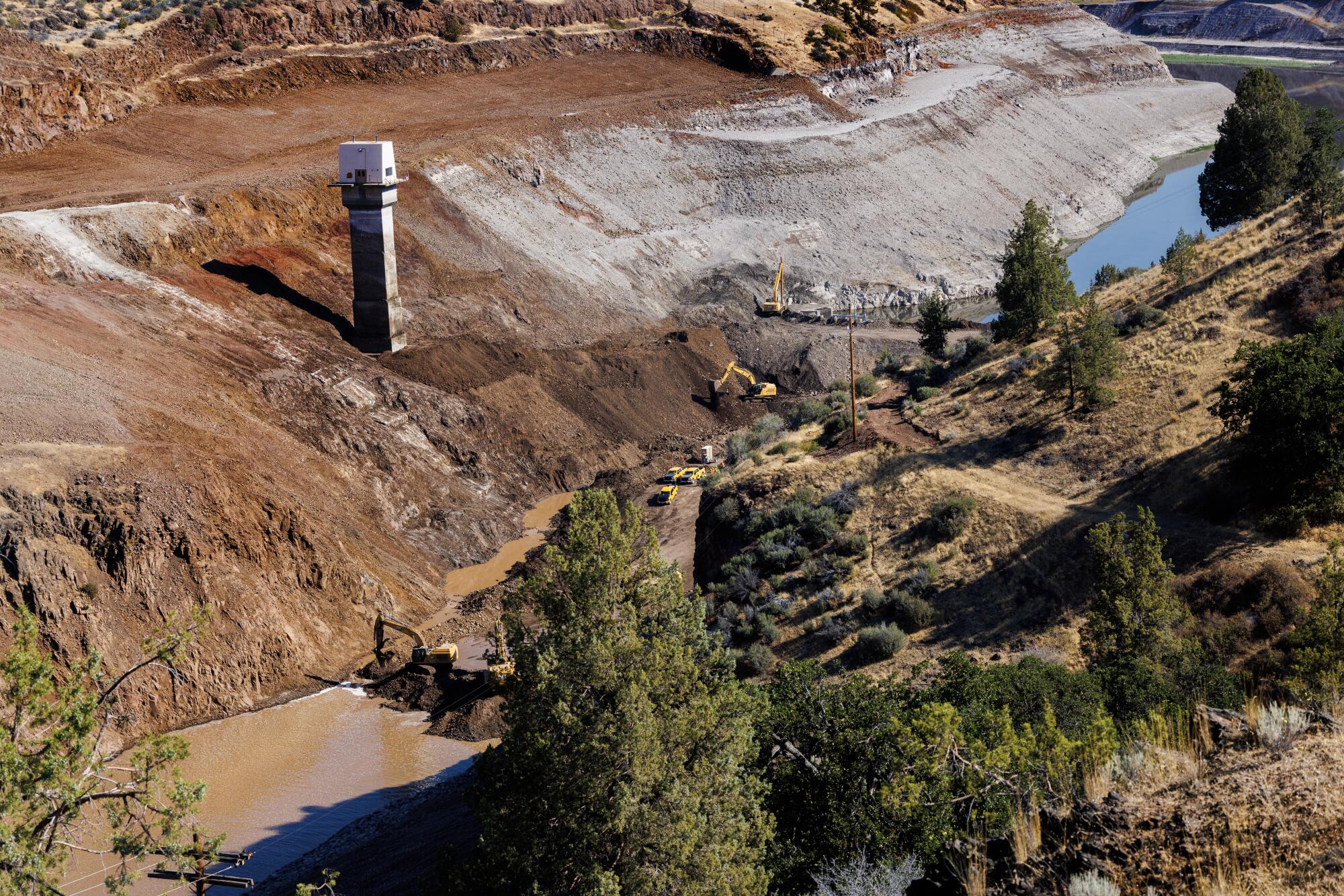
One morning in mid-August, on a tributary creek downstream from the dams, a group of men wearing wetsuits, masks and snorkels swam in clear pools, scanning the water for small fish. The team, part of the Karuk Tribe’s fisheries program, was searching for juvenile chinook and coho salmon.
“Did you see anything?” Toz Soto, the tribe’s fisheries program manager, asked one of the snorkelers.
“No,” the man said. “Saw some steelies” — steelhead trout.
Soto, who has worked for the tribe for more than two decades, said that 15 years ago, it wouldn’t have been difficult to find chinook salmon here in Wooley Creek.
“Now it’s hard. Just finding fish is challenging now,” he said.
The team continued searching in a pool below a sheer rock face. Using a seine net, they formed a circle and pulled up their catch.
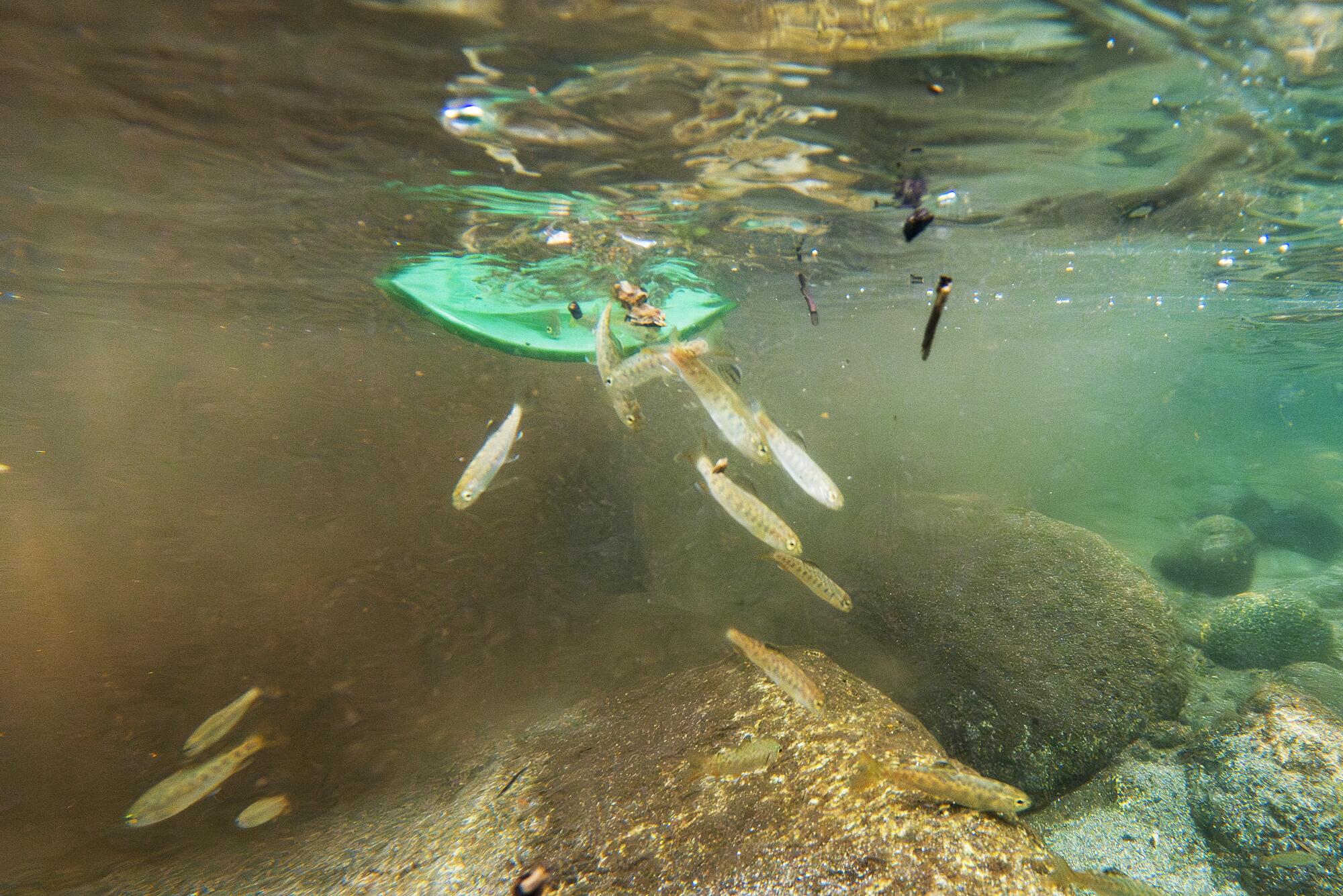
At first, they didn’t find any salmon. But after a few tries, the net came up filled with small wriggling fish, including some salmon.
Sitting on the bank, the team went to work. They inserted tracking tags in the small coho salmon, and clipped tiny pieces from chinook salmon fins, placing them in envelopes for genetic testing.
The sampling will provide data that can support efforts to rebuild salmon populations, which have declined dramatically because of a mix of factors, including dams and water diversion as well as the worsening effects of climate change.
Captains of fishing boats on the California coast are bracing for salmon fishing to be severely restricted — or possibly canceled for a second year.
In May, California banned commercial and recreational salmon fishing for a second straight year due to low numbers. Members of the Karuk and Yurok tribes continue small-scale subsistence fishing.
Tribal leaders have said they hope salmon populations will gradually rebound as the fish return to productive cold water upstream.
“I think dam removal couldn’t come at a better time,” Soto said. “We just tripled the amount of habitat. So that’s pretty exciting.”
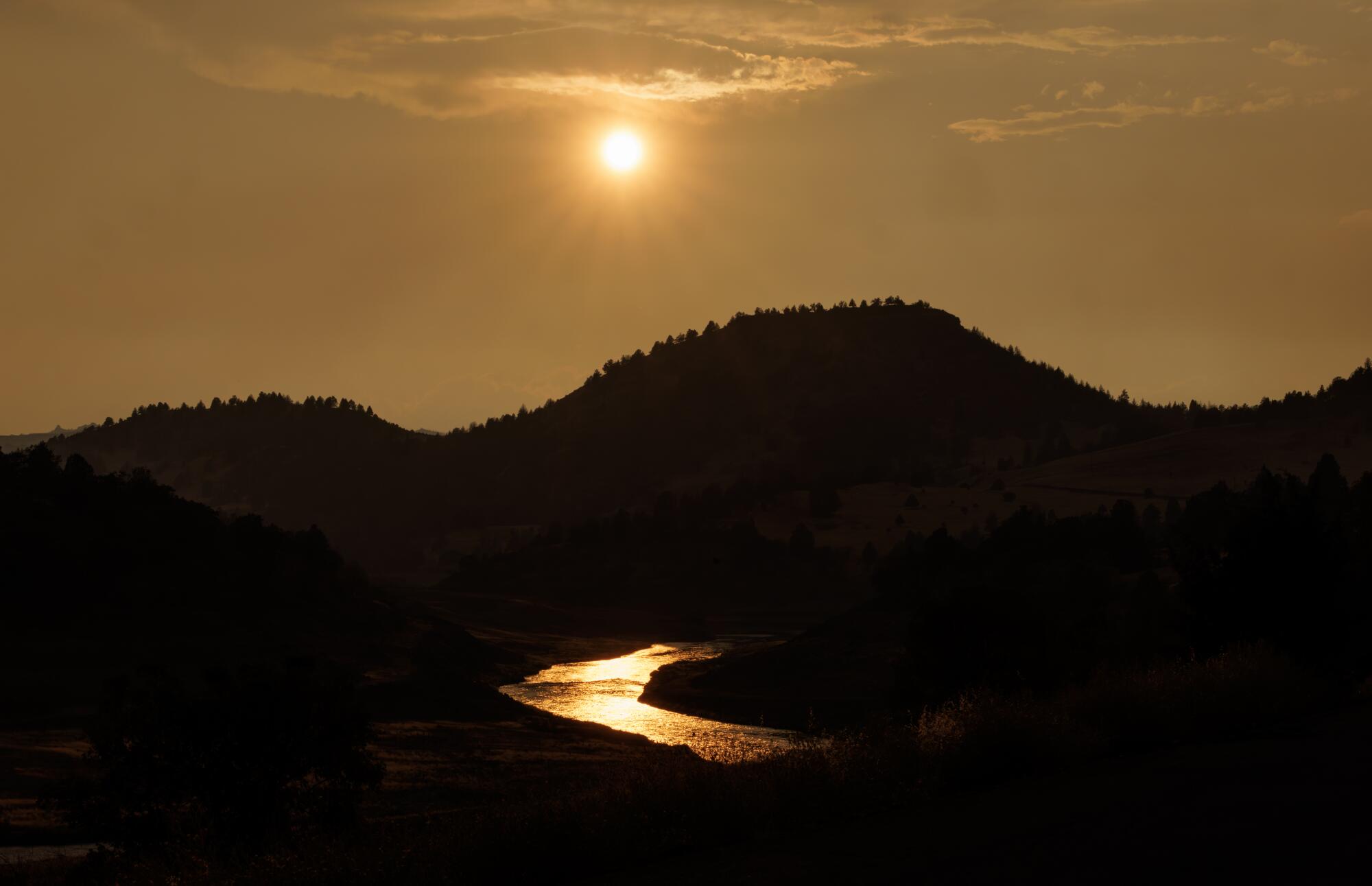
On a recent evening, Karuk men and boys gathered by the Klamath wearing traditional regalia and holding spears, bows and quivers made of animal skins and filled with willow branches. They sang, let out cries and danced facing a fire.
Their celebratory dance was part of the tribe’s annual World Renewal Ceremony. Leaf Hillman, an elder and ceremonial leader of the Karuk Tribe, said that through this sacred ritual, people come together to “help to put the world back in balance.”
“It’s a resurgence, it’s a revival. It’s a renewal that we do every year, but this one feels significant,” Hillman said. “The added meaning for us is that we’ve been praying for the dams to come down for all these years.”
Hillman and others spent more than two decades campaigning for the removal of dams, including filing lawsuits, holding protests and speaking out at meetings of utility shareholders.
“We consider ourselves fix-the-world people, and really the whole effort around dam removal and activism,” he said, “was kind of a natural extension of that.”
With the dams now gone, he said, the Karuk are finally celebrating victory.
“People are feeling inspired,” he said. “I’m feeling hopeful about the future.”
Toward a more sustainable California
Get Boiling Point, our newsletter exploring climate change, energy and the environment, and become part of the conversation — and the solution.
You may occasionally receive promotional content from the Los Angeles Times.

